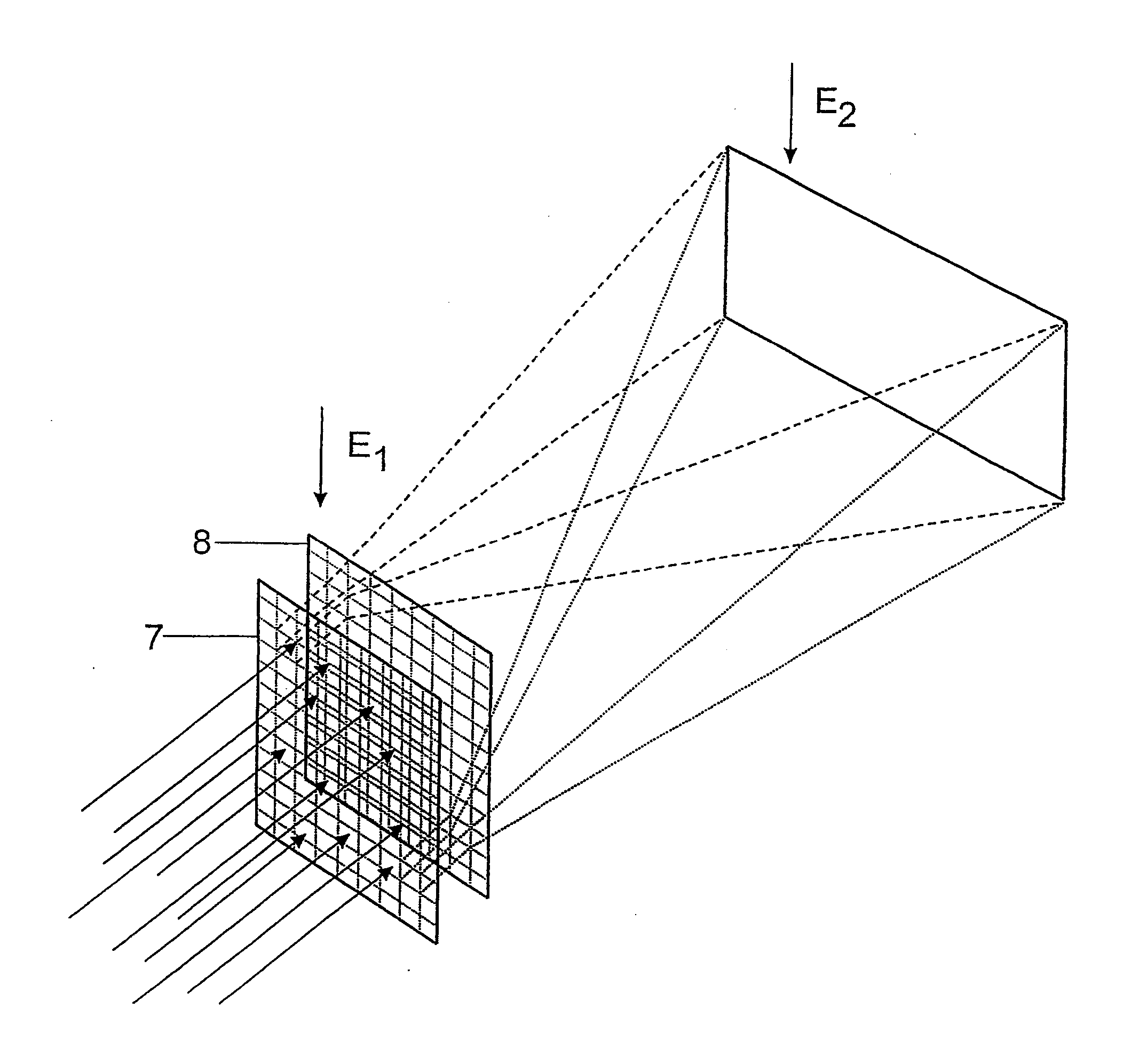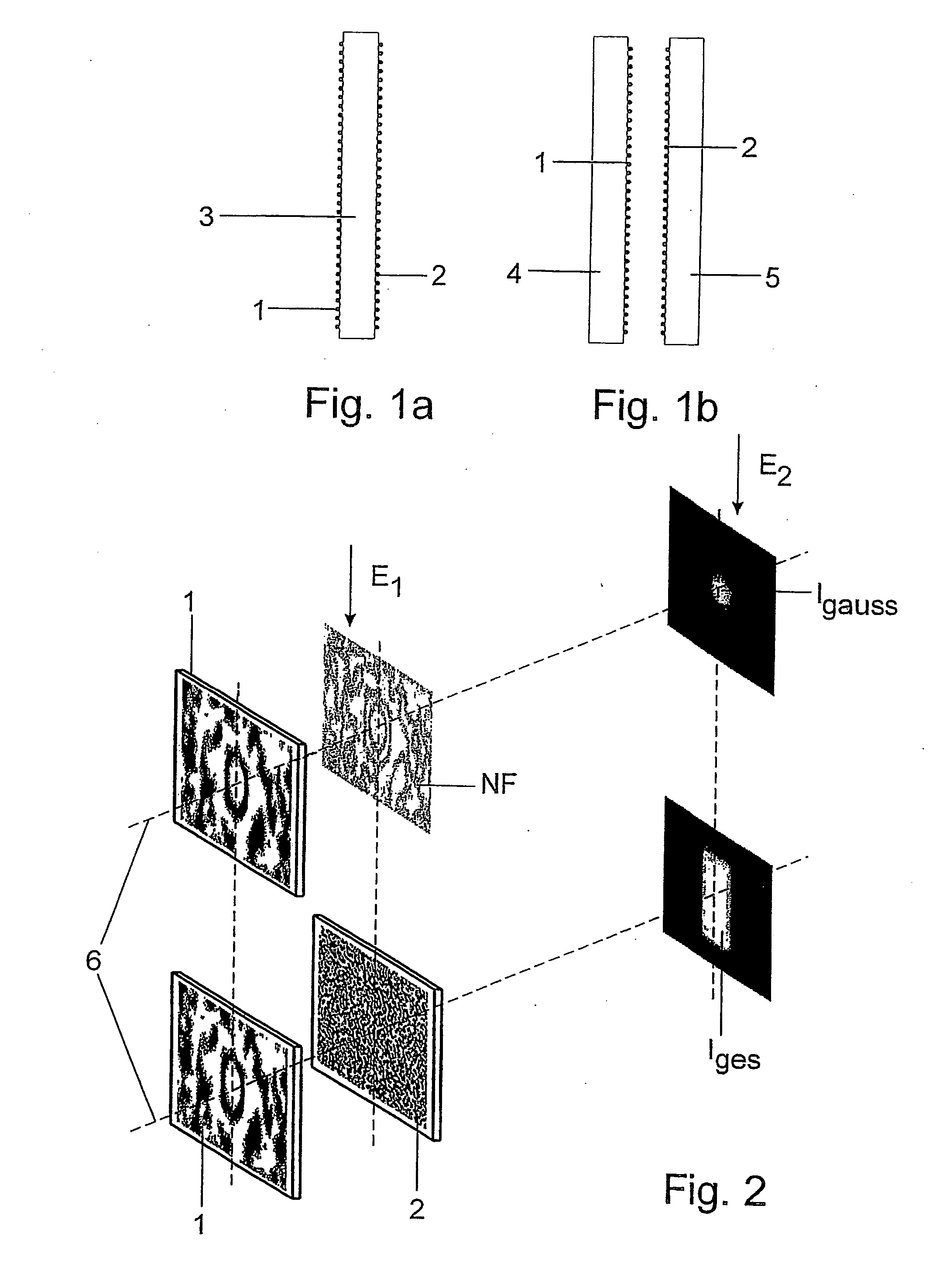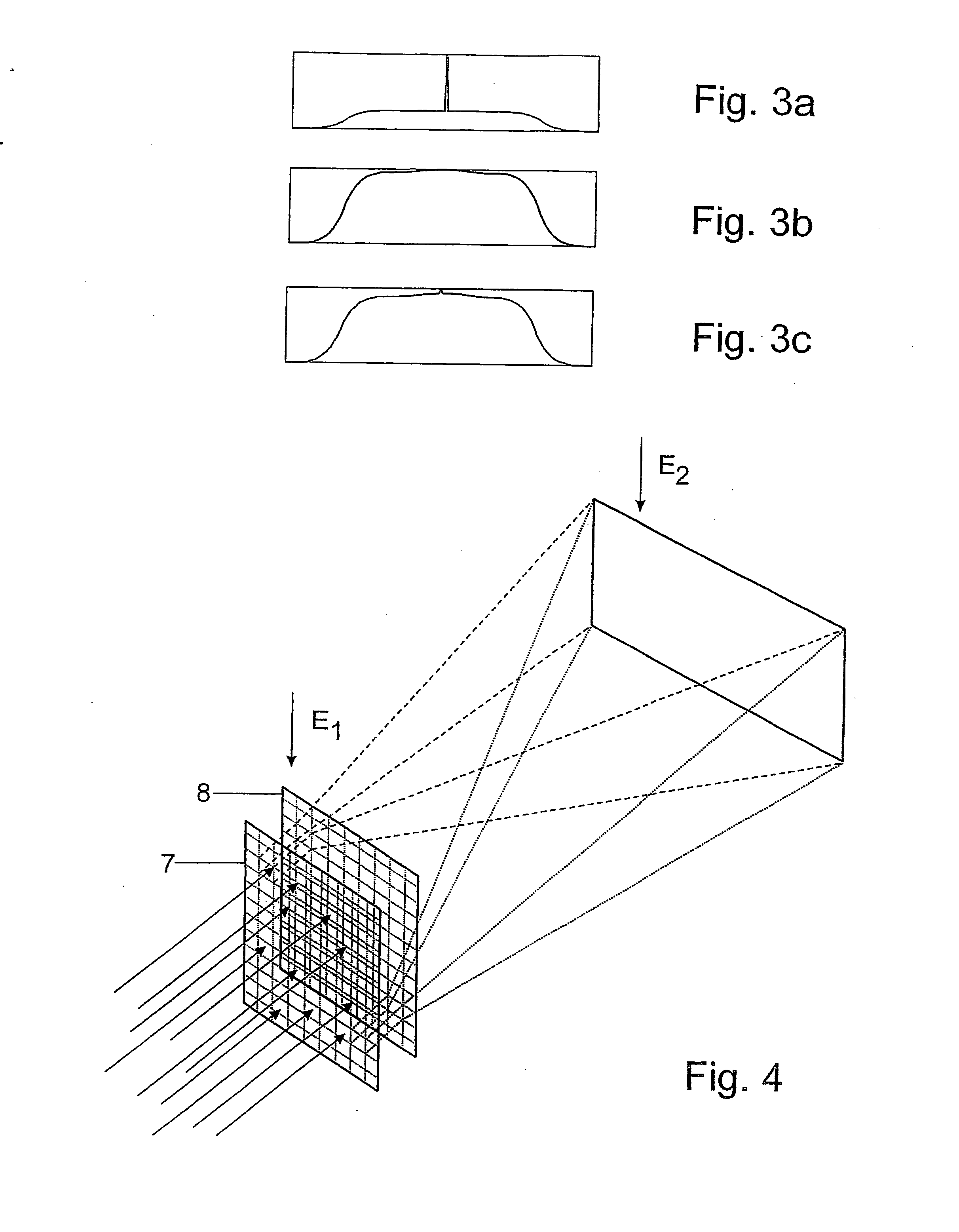Optical System For Converting A Primary Intensity Distribution Into A Predefined Intensity Distribution That Is Dependent On A Solid Angle
a technology of optical system and intensity distribution, applied in the field of optical system, can solve the problems of inability to realize any desired intensity distribution, inability to use array homogenizers, diffractive structures, etc., and achieve the effect of reducing disruptive influence and higher apertures
- Summary
- Abstract
- Description
- Claims
- Application Information
AI Technical Summary
Benefits of technology
Problems solved by technology
Method used
Image
Examples
Embodiment Construction
[0043] Homogenizing and / or beam-shaping micro-optic structures, designated for the sake of simplicity as micro-optic homogenization structures 1, 2, are used according to the invention.
[0044] The micro-optic homogenization structures 1, 2 which are arranged in succession can either be arranged on a transparent plate-shaped optical carrier 3 on opposite lateral surfaces (FIG. 1a) or two transparent plate-shaped optical carriers 4, 5 can be arranged adjacent to one another and their surfaces that face one another can have the micro-optic homogenization structures 1, 2 (FIG. 1b).
[0045] The micro-optic homogenization structures 1, 2 can contain diffractive binary structures or diffractive structures with a plurality of height levels or refractive structures with a continuous height profile, e.g., lens array arrangements. Therefore, the surfaces of the transparent optical carriers 3-5 can have diffractive structures or diffractive and refractive structures are combined in that a first ...
PUM
 Login to View More
Login to View More Abstract
Description
Claims
Application Information
 Login to View More
Login to View More - R&D
- Intellectual Property
- Life Sciences
- Materials
- Tech Scout
- Unparalleled Data Quality
- Higher Quality Content
- 60% Fewer Hallucinations
Browse by: Latest US Patents, China's latest patents, Technical Efficacy Thesaurus, Application Domain, Technology Topic, Popular Technical Reports.
© 2025 PatSnap. All rights reserved.Legal|Privacy policy|Modern Slavery Act Transparency Statement|Sitemap|About US| Contact US: help@patsnap.com



